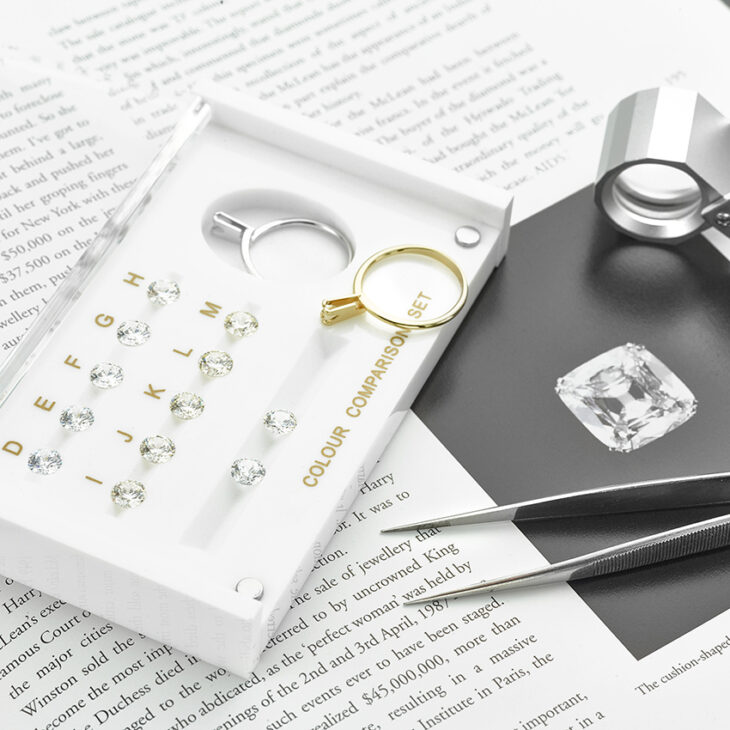E-colour diamonds are a great idea for an engagement ring and represent the second whitest grade any diamond can achieve.
We grade diamonds with a letter attributed to represent a grade of whiteness. D colour diamonds represent the best possible colour. E colour follows with very little difference between D and E colour. Diamond colour, in addition to other characteristics (carat weight, cut and clarity) make up the 4C’s to determine the value of a diamond.
D colour diamonds attract buyers owing to the prestige and rarity of the very best diamond colour. However, the greater availability and lower price of an E-colour diamond offer buyers a near-identical whiteness at a lower cost. For this reason, we recommend E as a good idea for engagement rings and jewellery.
Look at the photograph below which shows 10 diamonds ranging in colour from D through to M. Notice how diamonds below H colour exhibit a progressive yellow tint.

Should you choose a D, E or F colour diamond?
Having compared D and E colour diamonds, you might be wondering whether to choose an F colour diamond instead. To be honest, we gladly recommend D, E or F colour diamonds. All three options assure buyers of a very high level of whiteness with no visible tint in the stone. At the same time, give adequate consideration to the other factors, clarity, carat weight and cut. Don’t choose a D-colour diamond and sacrifice clarity just for colour.
For example, a D, E, or F colour diamond with a VS2 or SI1 clarity will provide a nice balance of whiteness and clarity. At the same time, aim for a very good cut grade to ensure your diamond is neither too deep nor too shallow. Sacrifice the cut grade and your diamond will lack the brilliance of diamonds with a higher cut grade.
What is the price difference between D and E colour?
The price difference varies depending on the carat weight and other factors affecting the diamond value. However, a price difference of somewhere between 20 – 30 per cent would be a reasonable estimate of the price difference.
About Mark Johnson
My name is Mark and I'm founder at Serendipity Diamonds. By day you'll find me working in our showroom—in a variety of roles. My work (which I love) ranges from photographing jewellery, to writing blog posts and helping clients with my colleagues Drina, Emily and Debbie.



